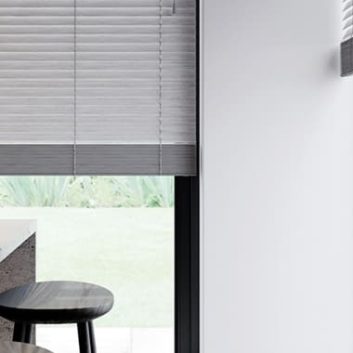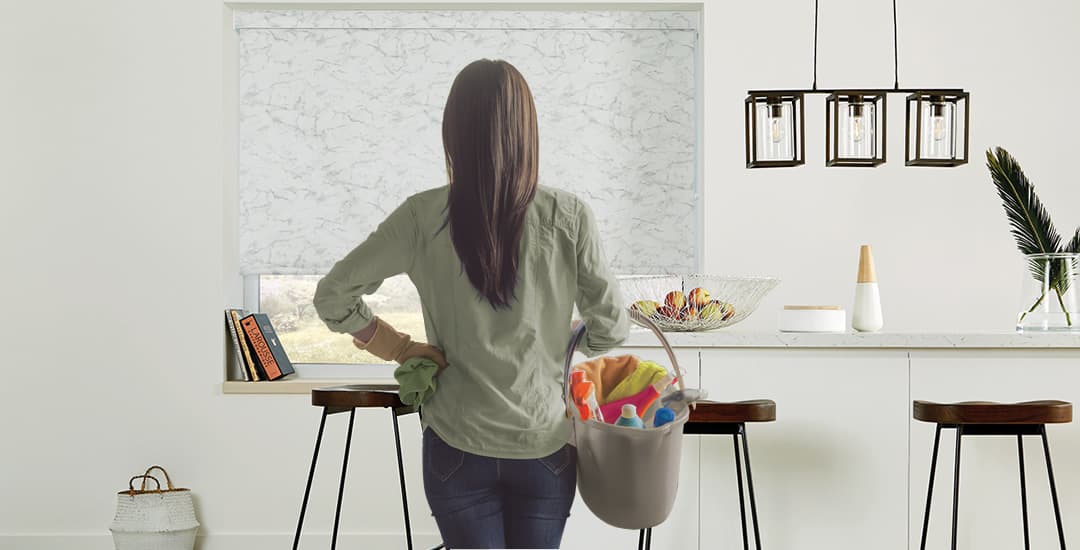
If you’re not Mrs Hinch and your prime consideration when it comes to choosing window coverings is what type of blinds are easiest to clean, read on and I will list them all in order of cleaning simplicity from the simplest to the most convoluted.
No time for all of that reading nonsense and just want a direct answer to the question of which type of blinds are easiest to clean? Ok, spoilers fan, it’s roller blinds. For the rest of you who want to find out a bit more about the comparative hassle involved in cleaning window blinds of different types, let’s roll.
What type of blinds are easiest to clean? Easiest to hardest in order
- 1. Roller blinds
- 2. Vertical blinds
- 3. Day and night blinds or zebra blinds
- 4. Pleated blinds or honeycomb blinds/cellular shades
- 5. Faux wood blinds
- 6. Aluminium Venetian blinds
- 7. Real wood blinds
- 8. Roman blinds
1. Roller blinds are the easiest blinds to clean
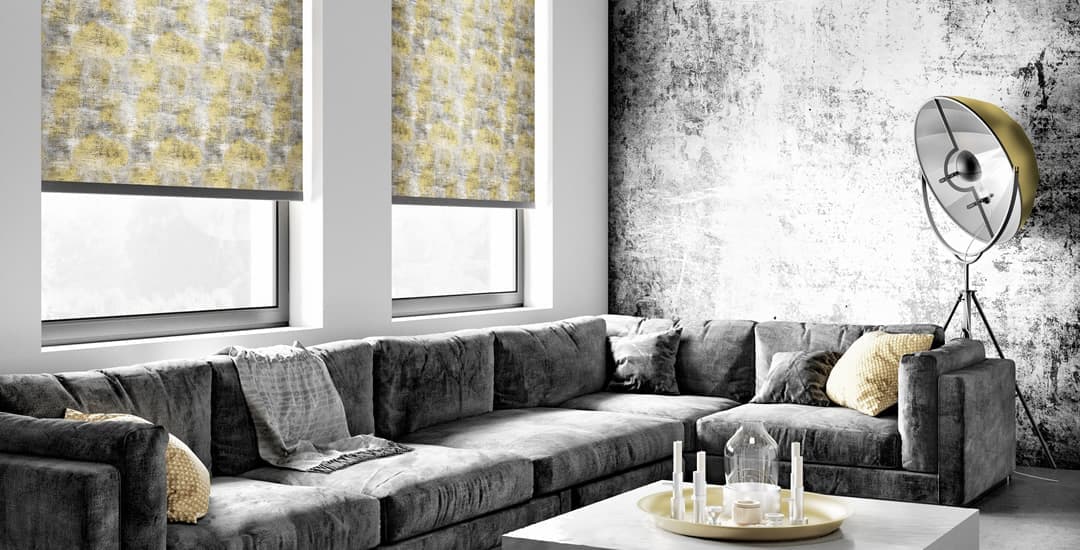
Arguably, the answer to what type of blinds are easiest to clean overall is roller blinds.
Now, some of my colleagues would fight me over this claim; and frankly, some came fairly close when I started polling them for this article. But then some of my colleagues could start a fight with the mirror… And I’m definitely not looking at Hairy Dan the CNC Man here.
Nobody felt that rollers didn’t deserve a place on the podium at all, but some (like Dan) would argue that vertical blinds should get first place in the “not going to be undue hassle to clean” stakes instead, because they hang vertically and so don’t have a tonne of horizontal surfaces for dust to socialise on.
I took this opinion into account but you know, also didn’t really; because roller blinds are definitely the easiest type of blinds to clean, and I should know because I’m the one writing this article and I get to make the call, or something a little more plausible.
My reasoning here (I do have some) is that if you open roller blinds during the day and close them each evening, they don’t get the chance to actually gather dust anywhere but on the tube at the top, which you can’t see anyway and which responds to five seconds with a feather duster as enthusiastically as Ken Dodd, albeit somewhat less alarmingly.
Even if you leave them in situ for the longest time, either open or closed, most of the blind is vertical anyway and so won’t hang onto a lot of fluff and such.
One minor disclaimer to this applies to roller blinds hung in bathrooms and particularly, kitchens.
This is because the moisture and humidity in environments of this type collects on the blind (and in the case of kitchens, cooking fats in the air join in too) and send out a mating call to all of the dust in the vicinity, which can lead to them furring up or at least feeling or looking a little grimy faster than they would in other rooms.
Even when this does occur however, the good news is that you can just give the blind a wipe down with a well wrung out damp cloth for polyester blinds, or a more thorough wash off for PVC ones (which tend to be those used for kitchens and bathrooms as they’re fully waterproof) and call it good.
If you want a more detailed explanation of how to clean roller blinds then I’ve already been there and done that too.
2. Vertical blinds are also easy blinds to clean
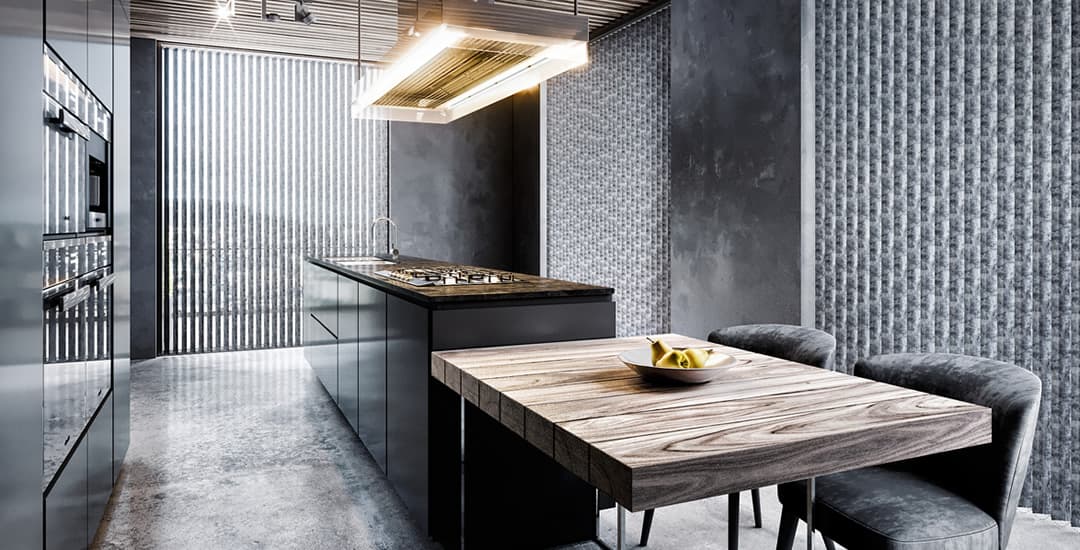
Dan’s gone now, so let’s carry on. Vertical blinds are the second easiest type of blinds to clean, unless you’re Dan, who holds them in high esteem in reflection of their apparently high level of support for his laziness.
Por que? Right well the thing about vertical blinds is that they hang vertically, and dust doesn’t come with the right type of footwear and equipment to scale them effectively.
Like roller blinds, verticals come in two different fabric choices, being polyester or PVC respectively; also like roller blinds, PVC tends to be used in kitchens and bathrooms, due to its waterproof superpowers.
Cleaning either polyester or PVC vertical blinds usually simply involves that duster again or even the soft brush attachment of a moderately restrained vacuum cleaner, and while polyester vertical blinds can be spot cleaned if needed, their PVC counterparts can be wiped down with a damp cloth or washed with a little more gusto if required as well.
Here’s how to clean vertical blinds without damaging them.
3. Day and night blinds or zebra blinds: Cool, also undemanding
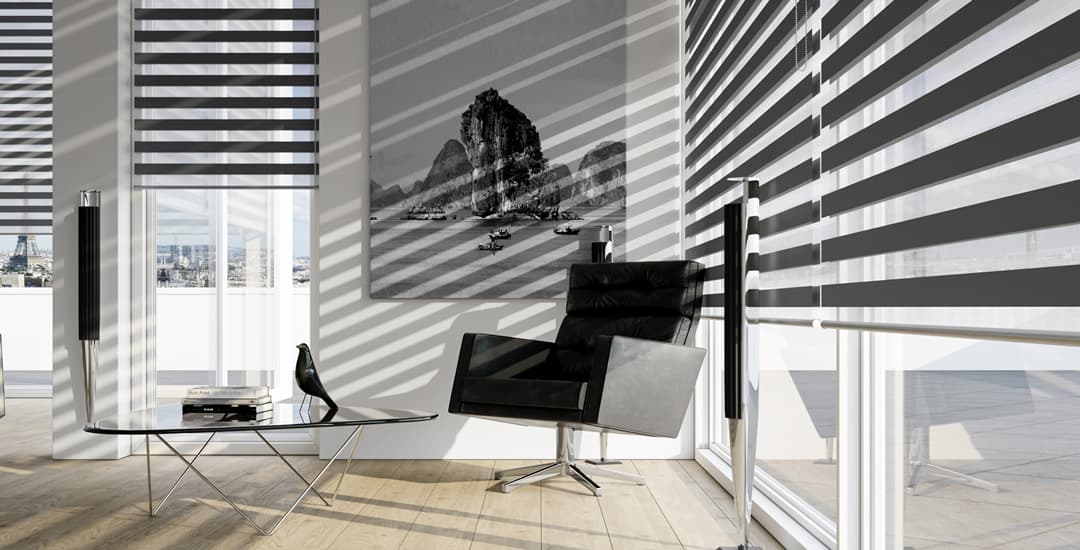
Cleaning day and night blinds or zebra blinds falls in third place in the ranking.
These are a type of roller blind, albeit a rather fancy one; made up of two layers of fabric in alternating sheer and solid stripes.
Like a zebra.
If zebras were also available in additional shades like hot pink as well as monochrome.
Day and night blinds or zebra blinds are made of polyester, and like regular roller blinds, don’t tend to pick up a lot of dust and can just be err, dusted when they do.
So, why aren’t day and night blinds in joint first place with rollers? Simply because the sheer stripes of your day and night blinds are made of a fine (but not strictly flimsy) fabric, which means you need to treat it with a little more care than roller blinds made of a solid sheet of opaque fabric.
Day and night blinds are quite new to the UK and are getting a lot of love right now, due to both their novelty value and the fact they’re versatile and simply cool. If you’re getting some and want to make sure they settle quickly into their new home, I’ve covered how to clean day and night blinds in quite some detail to get you started.
Trust me, reading the article itself will take you about ten times the length of time that the actual cleaning of the blind will…
4. Pleated blinds, a.k.a honeycomb blinds or cellular shades: Middle of the herd
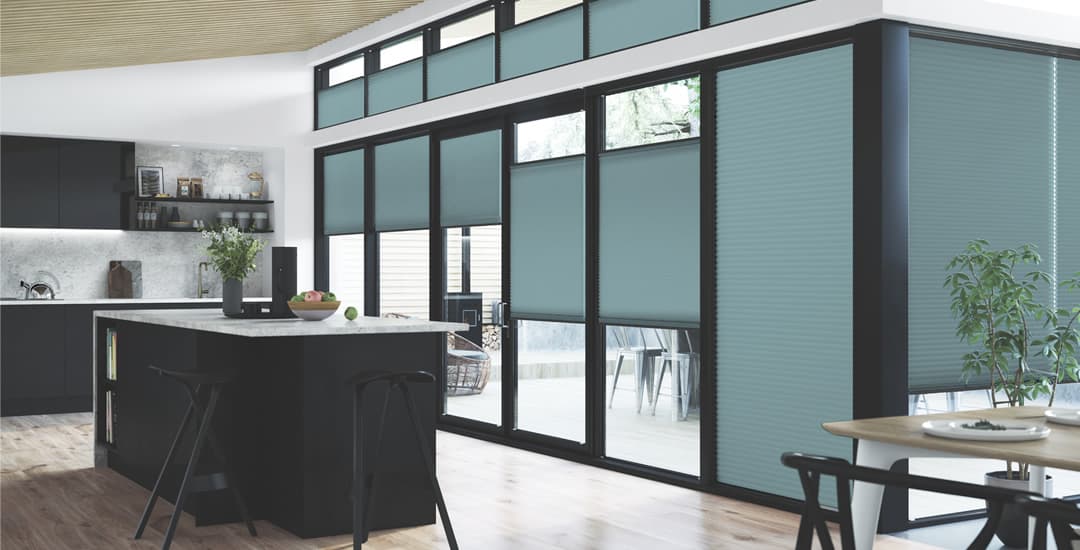
My herd allegory would have worked far more effectively for the zebra blinds than these, but however much I tried to convince myself to shake the order up a bit to pander to artistic licence, I just couldn’t bring myself to do it.
Also, a gang of zebras is known as a “dazzle,” not a herd, which absolutely filled me with delight when I learned of it.
Anyway, moving on. If day and night blinds or zebra blinds are the new kid in school here on the island, your pleated blinds, honeycomb blinds, or cellular shades as they’re interchangeably known, are the foreign exchange student who is even more interesting and so, apt to be befriended by all of the cool kids in short order.
Pleated blinds are highly thermally efficient, due to their cellular or honeycomb construction. Air gets trapped in their internal hexagonal cells, adding an extra layer of insulation even over and above that which all blinds offer to your window.
Are pleated blinds easy to clean? Yes…Ish, hence their positioning at number four on my list. On the plus side the pleated fabric they’re made of is anti-static and so won’t require frequent attention on the dust front, but on the minus side, the anti-static fabric is err, pleated, which I am sure you can imagine can be something of an annoyance to clean as it doesn’t form a flat surface.
Either way, a duster or soft brush attachment on the vacuum will sort you out.
5. Faux wood blinds: Easy to clean, but lots of slats
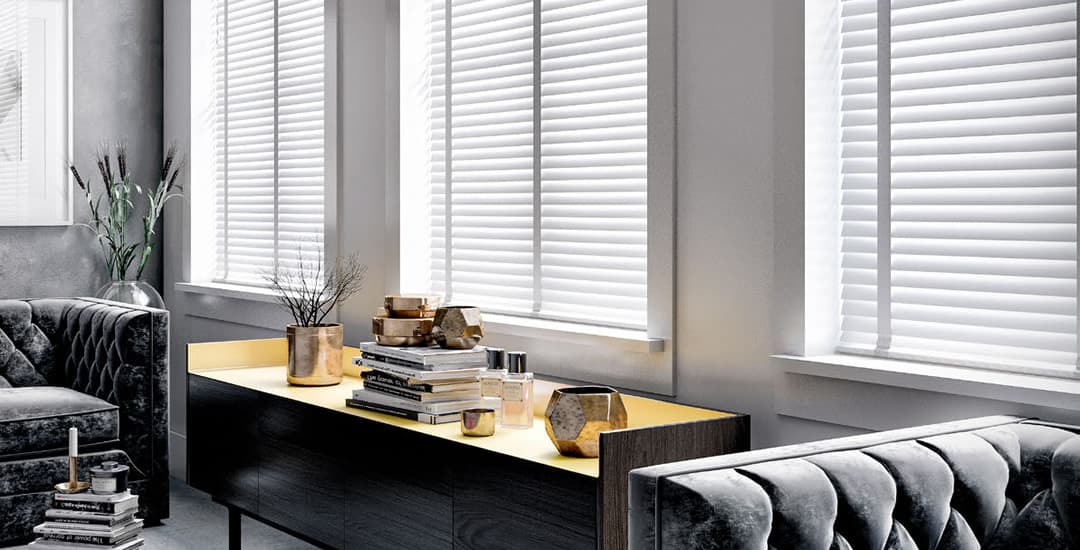
Faux wood blinds are easy to clean, but not as quick as the above-mentioned options simply because they’re made up of sooooo many individual slats. This means that even if you were trying to beat the land speed record for blinds cleaning, someone driving a roller blind is undoubtedly going to lap you before the final circuit if your vehicle of choice is faux wood.
If your faux wood blind is left with the slats sitting on the horizontal for a long time, they’re going to pick up a reasonable amount of dust. However, all you need to clean them up is a duster, damp cloth, or sponge to resolve this, although as mentioned, this can take you a while; particularly for blinds in kitchens or bathrooms that have moisture (and in kitchens, cooking fat residue) helping the dust to stick.
Faux wood blinds are completely waterproof, which means you can also wash them down if needed. For a full run-down on all of the options have a look at our how to clean faux wood blinds guide.
6. Aluminium Venetian blinds: Not hard to clean but once more, lots and lots of slats
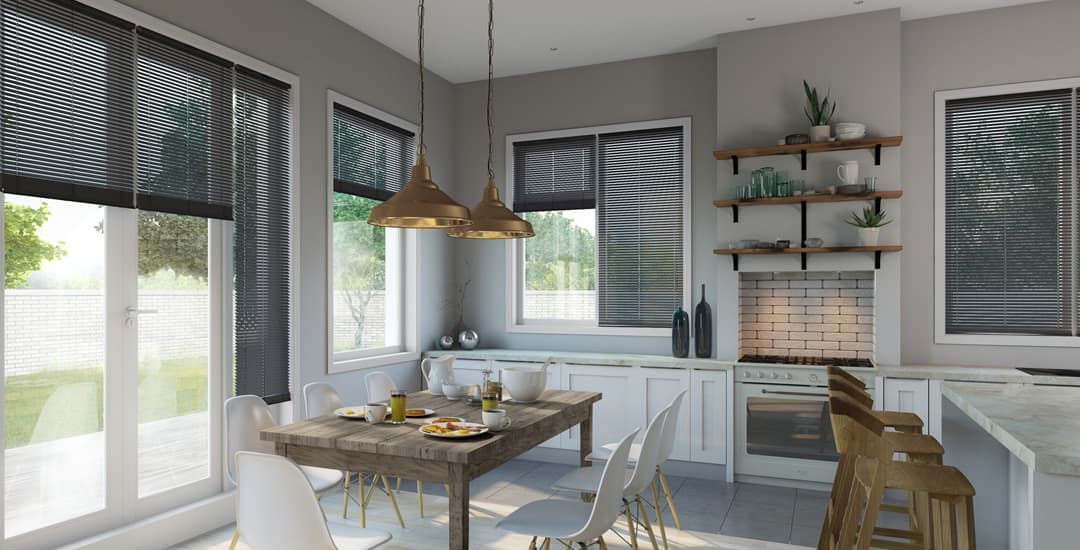
Once more, low ranked in the ease-of-cleaning stakes due to having tonnes of slats rather than because they require a degree in Hinching to de-mank, aluminium Venetian blinds are not hard to clean but just potentially a bit time consuming, albeit this is relative rather than literal.
Why not joint fifth with faux wood blinds though, if it’s just a “there’s lots of slats” thing? Because aluminium Venetian blinds are not quite as robust as faux wood blinds, and they tend to have smaller slats, which means like for like, more of them; and consequently, more of them to clean too.
Again though, cleaning aluminium Venetian blinds just requires dusting, or wiping off with a damp cloth if you prefer, although this latter isn’t something you’ll need to do often (if at all) and will be the rather more time-consuming option if you do want to go that route.
If you want some more detailed instructions on how to clean venetian blinds, here you go.
7. Real wooden blinds: Again, slats-a-rama, also, not a fan of water
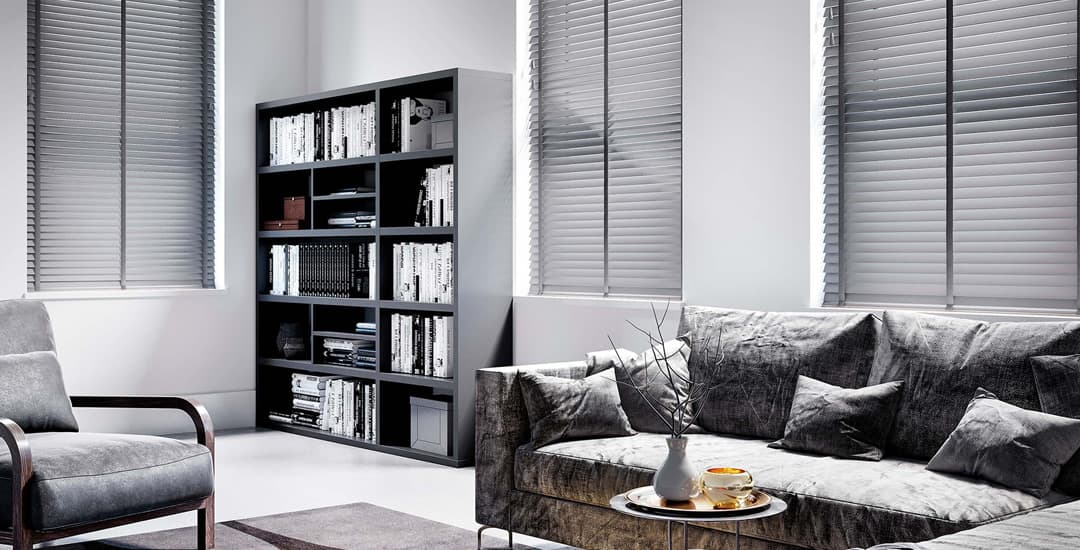
Again, issue one with cleaning real wooden blinds is All Of The Slats (real wooden blinds being a type of Venetian blind once more) and also, the fact that real wood is a natural product, and so not waterproof and ergo in need of the appropriate care and handling.
Real wooden blinds left with the slats horizontal for a long time will again tend to collect dust, but again, a duster will remove it; you can also use a vacuum cleaner with a soft brush attachment too.
However, if your blinds are a bit grimy and a duster isn’t quite up to the task, cleaning a real wooden blind with a damp cloth is possible, but needs to be handled carefully to avoid leaving standing water on the slats, or causing water marking or even warping if very wet. You also need to dry them off reasonably thoroughly afterwards too.
For full instructions as well as all of the dos and don’ts of have a look at our guide to cleaning real wooden blinds.
8. Roman blinds: Total drama queens
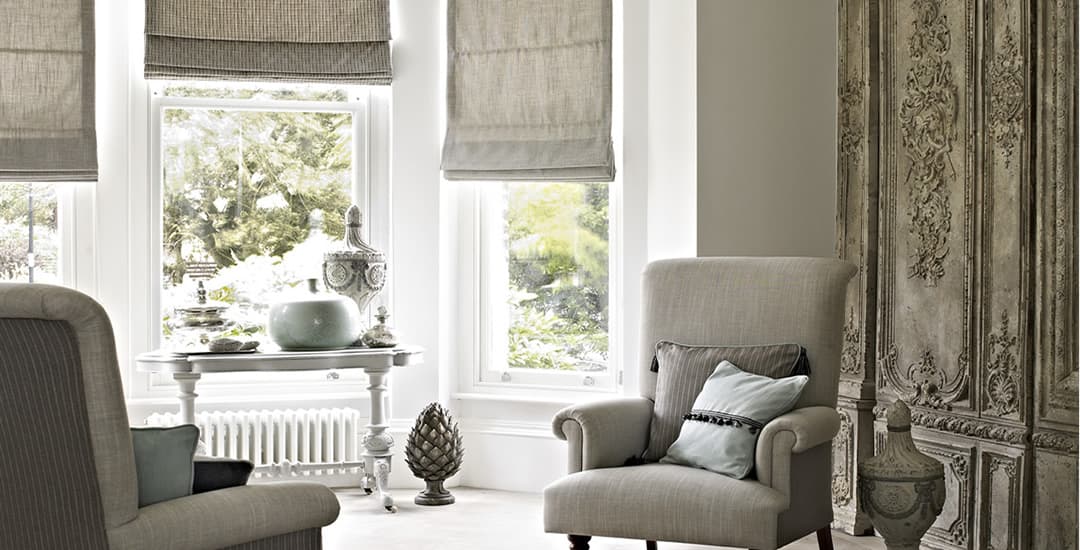
And finally! Roman blinds are definitely the squeaky wheel of the blinds world when it comes to ease of cleaning, because they are made of soft, sometimes delicate fabrics that almost always require specialist dry cleaning.
That said, thinking outside of the box somewhat it can be argued that this actually makes them the easiest type of blind to clean simply by virtue of the fact that you won’t be the one doing it when it happens!
Really though a better approach is to try and avoid or at least slow down the rate at which Roman blinds reach the point of needing a proper cleaning in the first place.
The folds of a Roman blind can pick up dust over time like any other horizontal surface, and so dusting them off regularly can help to keep this from becoming ingrained and reduce the frequency at which they need more specialist cleaning. You can also dust Roman blinds with a vacuum cleaner’s soft brush attachment, with care.
In some cases, Roman blinds can be spot-cleaned very carefully for the odd localised mark, but do check what they’re made of and what their manufacturer has to say about this first.
Ultimately, raising and lowering your blind regularly to reduce dust build-up, and trying to keep it clear of children that might be handsy or painty or that like to keep their dinner in places other than in its bowl is advised too.
If you want a more detailed guide of how to clean roman blinds, I’ve covered that too.

